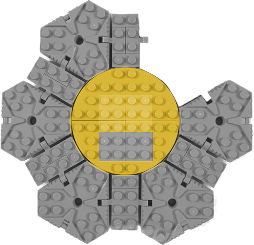Domain

The Machc Parent Project provides a robust framework for modular development, with domain-specific libraries that contain the essential Entities and Interactors required to build scalable, maintainable, and reusable software systems.
Each domain library is designed to address specific areas of the business logic while adhering to Clean Architecture principles. This structure ensures long-term flexibility, separation of concerns, and high reusability across multiple projects.
Domain Libraries in Machc
The Machc Parent Project organizes its libraries into various business domains, each containing dedicated Entities and Interactors. These libraries act as building blocks for creating applications specific to business requirements, ensuring modularity and independence.
1. User Domain Library
The User Domain Library provides foundational components for user-centric features. It contains:
- Entities: Represents users (e.g.,
UserId,Person,AuthenticatedPerson,UserProfile) with reusable data structures and attributes. - Interactors: Encapsulates the use cases such as user creation, authentication, and profile management, ensuring business rules are independent of external frameworks.
For more information see: User
2. Product Domain Library
The Product Domain Library enables applications to manage e-commerce products effectively. It includes:
- Entities: Represents products (e.g.,
ProductId,Product) with core attributes like product name, pricing, and categorization. - Interactors: Implements use cases such as creating product entries, updating product details, and retrieving product catalogs, ensuring seamless integration with business workflows.
3. Order Domain Library
The Order Domain Library handles order-related functionality and workflows. It provides:
- Entities: Represents orders (e.g.,
OrderId,Order) with core data attributes such as order status, items, and fulfillment details. - Interactors: Encapsulates use cases for order submission, order tracking, and payment integration, following Clean Architecture guidelines.
Entities and Interactors
Entities
Entities are the core data models within each domain, representing the most general and high-level rules and structures relevant to the domain. They encapsulate essential attributes and business rules, ensuring independence from external layers such as UI or database systems.
Characteristics of Machc Entities:
- Reusable: Can be integrated into multiple applications with minimal modification.
- Adaptive: Designed to scale with evolving business needs.
- Modular: Independent from external dependencies, enabling clean separation of concerns.
Interactors
Interactors represent the application business rules, handling orchestration of data flow between entities and external systems. They implement domain-specific use cases and direct entities to apply their business rules effectively.
Characteristics of Machc Interactors:
- Encapsulation: Abstracts business logic into use cases while keeping the core logic clean.
- Scalable: Modular structure allows easy extension of use cases.
- Framework Independence: Designed to be compatible with external systems without relying on specific frameworks.
Clean Architecture Alignment
The Machc domain libraries are structured following Clean Architecture principles: - Core Independence: Each domain library is built independently from external frameworks or UI components, ensuring scalability and testability. - High Modularity: Separation of domains allows developers to focus on specific business logic without impacting other areas. - Reusability and Adaptability: Libraries are designed to be easily integrated into applications tailored to diverse workflows, deployment styles, or infrastructure requirements.
Why Use Machc Domain Libraries?
-
Accelerated Development:
-
Predefined Entities and Interactors serve as building blocks, reducing time spent on boilerplate code and system design.
-
Maintainability:
-
Adheres to Clean Architecture principles, ensuring code remains organized, testable, and scalable.
-
Customizability:
-
Allows developers to extend libraries with project-specific functionality while retaining modularity.
-
Cross-Domain Communication:
-
Seamless interaction between domain libraries, enabling collaborative workflows and comprehensive business solutions.
By leveraging Machc domain libraries, developers can create robust, scalable applications that align with Clean Architecture best practices and address real-world business needs effectively. Explore individual domain pages for more details about Entities and Interactors in each library.